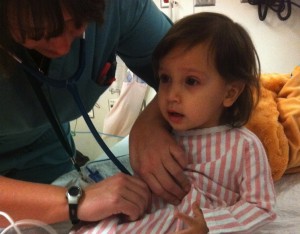Cal-SEARCH, its literature says, “will provide funded training opportunities for health professional students and residents statewide" who are enrolled in one of 15 programs ranging from primary care residencies to clinical psychology to clinical social work. Those who qualify “will serve a 4-8 week, 80-hour minimum, clinical rotation in CCHCs (community clinics and health centers) and complete a community project.”
If students successfully complete their stints, they get “a modest stipend” of $700. The program provides no money for housing or food or transportation. That’s all on the student.
And speaking of modest, I found that Cal-SEARCH is part of a national SEARCH program, funded by the U.S. Department of Health and Human Services, that since its inception three years ago has cost the government a paltry $579,000. That’s right, a little more than half a million for three years, less than the cost of one moderately priced home in California. Since the program operates in a number of states, it’s a safe bet that the budget for California’s version is a modest part of that modest amount.
It sure sounds like an unusually cost-effective way to open the world of medically underserved California to medical students, to acquaint them with the challenges, opportunities and rewards that working in such an environment can offer.
And again, the state uses federal monies, not its own, to get a leg up on a major challenge facing California -- getting medical professionals to underserved areas and populations.
So, using exclusively federal dollars to solve a California problem? Too good to be true, eh?
Well, it is.
Money for the program has run out, and there are no federal dollars to keep Cal-SEARCH alive, said Donna Scheerer-Treleven, senior program coordinator with the California Primary Care Association. The CPCA serves as one of several partners for the program’s California arm.
The SEARCH program, or some rendering of it, has been around for years. The most recent version began in September of 2009, funded by Washington stimulus money. But, “we’re at the tail end of that now,” said Scheerer-Treleven. The program will end on September 30, despite its popularity.
“Feedback has been overwhelmingly positive from program participants,” said Lupe Alonzo-Diaz, acting deputy director at OSHPD’s Healthcare Workforce Development Division.
So positive that the program grew almost exponentially over the last three years – from 25 students in year one to 45 the second year and 78 this year.
“It’s a great way to get students into rotations who might not have gone this route if it weren’t for this program,” said Scheerer-Treleven. “Students have loved it.”
Long Beach native Christine Ruby, 30, certainly did. Ruby, who has eight months to go for a master’s degree in public health plus a second one in physician assistant studies at Touro University, completed a six-week program at Altamed’s Huntington Beach community clinic just last month.
By the second week she was seeing patients on her own, with a “preceptor” to guide her. Over the course of her training, “I easily saw hundreds of patients,” Ruby said.
So was the program worth it? “The whole basis of the program is to encourage people to go into primary care and serve the community,” Ruby said. “It benefits the health care system at no cost to the system at all. It just seems silly to me not to continue to fund it.”
The folks at OSHPD seem to feel the same way.
“While initial funding has ended, OSHPD is optimistic that it will secure funding and continue to offer students and residents the opportunity to participate in the future," Alonzo-Diaz said in an email statement.
